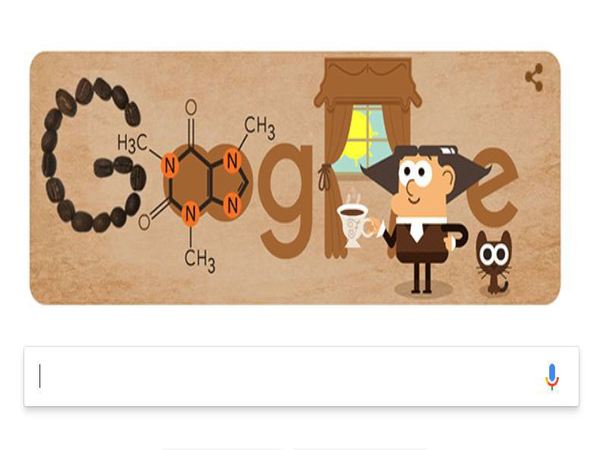Friedlieb Ferdinand Runge: Google Doodle celebrated this German chemist’s 225th birthday on February 8. Runge discovered caffeine and had begun experimenting as a teenager. Scroll down to know how!

Google Doodle on February 8
The Belladonna Study
From an early age, Friedlieb Ferdinand Runge expressed his interest in chemistry and began experimenting as a teenager. One of his early experiments includes the effect of belladonna plant’s extract on the dilating of pupils. Accidentally, a drop of belladonna extract got in his eyes, of which, he took notes to further study its effects on his pupil. It also demonstrates of experience in science laboratory without glasses!
Ten years later Friedlieb Ferdinand Runge was asked
The Caffeine Study
Friedlieb Ferdinand Runge’s experiment was noticed by his professor Dobereiner’s friend, Johann Wolfgang von Goethe, who encouraged him to analyze coffee.
Later in his career, Runge invented a synthetic blue dye called aniline blue, as well as a process for splitting compounds into their constituent chemicals, called paper chromatography, and a method for extracting sugar from beet juice. He also became one of the first chemists to isolate the compound quinine, which was used for decades to treat and prevent malaria. Sadly, there’s no record of how much coffee Runge consumed to fuel all that time in the lab.
And Many Other Studies
Friedlieb Ferdinand Runge completed his doctorate from the University of Berlin and taught at the University of Breslau till 1831. His noteworthy inventions include first coal tar dye along with a process on how to dye clothes. He is also one of the first scientists to isolate quinine (a drug used to treat malaria).
Friedlieb Ferdinand Runge has also contributed as an originator of paper chromatography (an early technique for separating chemical substances) and devising a method for extracting sugar from beet juice.
His contributions to the world also include: being one of the first scientists to isolate quinine (a drug used to treat malaria), considered an originator of paper chromatography (an early technique for separating chemical substances), and even devising a method for extracting sugar from beet juice.
Despite his contributions to chemistry, Runge died in poverty in 1867 at the age.
Stay tuned for more updates!






